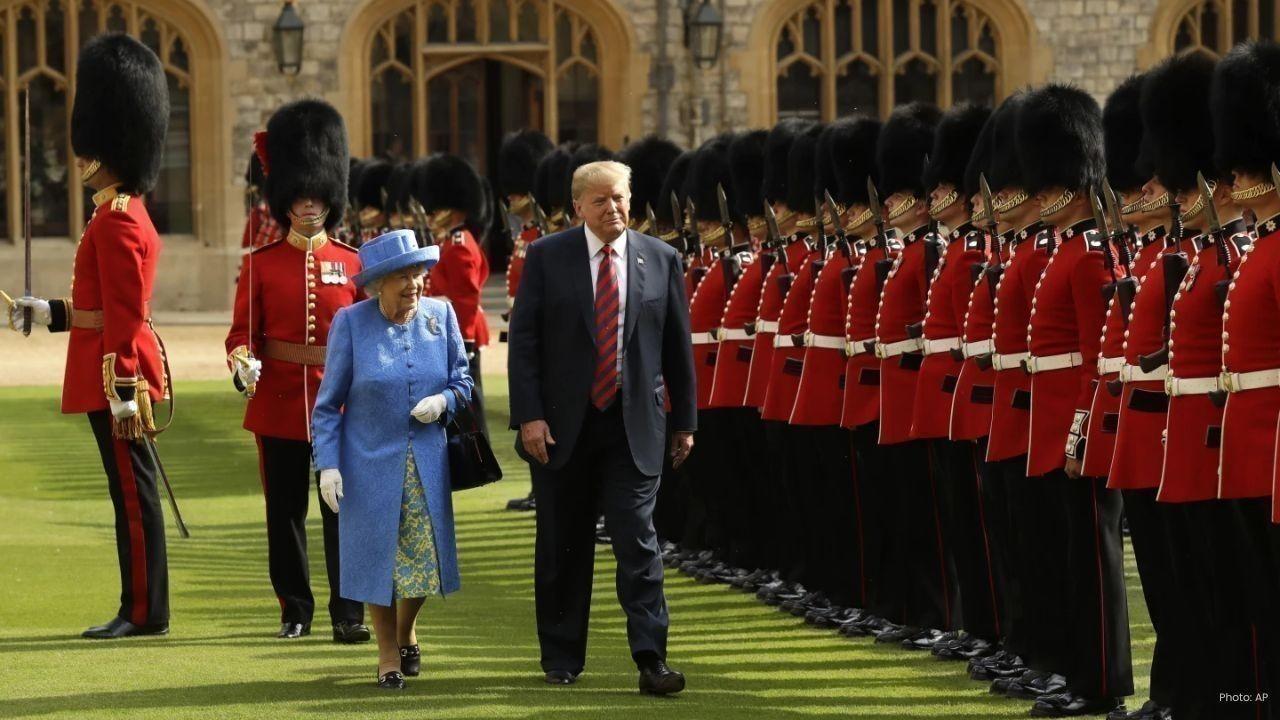
Join 10k+ people to get notified about new posts, news and tips.
Do not worry we don't spam!

Post by : Anish
In an era of escalating global tech competition, Taiwan is doubling down on innovation. The island’s government recently unveiled a landmark initiative—the “Ten Major AI Infrastructure Projects”—aimed at generating over T$15 trillion, roughly US$510 billion, in economic value by 2040. This is no idle promise. It is a long-term strategic bet on Taiwan’s strengths in semiconductors, ICT hardware, and industrial ecosystems.
The plan zeroes in on three major pillars—silicon photonics, quantum technologies, and AI robotics—while advancing sovereign AI, computing infrastructure, venture capital infusion, job creation, and regional development. The question now becomes: how does Taiwan intend to execute such a sweeping vision, and can it truly reshape the global AI landscape?
Silicon photonics stands as the technological heartbeat of Taiwan’s plan. It involves using light, rather than electrons, to transmit data. This approach dramatically improves bandwidth, speed, and energy efficiency—all critical for massive AI workloads and next-generation data centers.
Taiwan’s semiconductor leaders—most prominently, TSMC—are central to this push. They are investing in photonics-capable foundries and R&D hubs. This coincides with global academic breakthroughs, such as the development of reconfigurable silicon photonic processors enabling matrix multiplications, neural-network layers, and secure encryption on chip. Essentially, Taiwan seeks to be a world leader in merging optical networking with chipmaking, cementing its edge in AI computation.
Quantum technology represents both promise and suspense. Taiwan’s initiative signals clear intent to develop a full quantum technology ecosystem—from hardware to talent and applications.
Building such infrastructure requires quantum-grade instrumentation, secure supply chains, and research labs capable of tackling quantum decoding, quantum-safe encryption, and scalable quantum processors. By establishing globally ranked quantum research facilities within the next decade or so, Taiwan is aiming to become the quantum hub for industries and governments navigating post-classical computing.
Robotics is Taiwan’s third pillar. The island already has a robust hardware supply chain—covering everything from actuators to control systems. But the AI robotics push accelerates this by integrating autonomous decision-making, machine learning, and natural interface layers into physical machines.
To spearhead this, an AI Robotics Industry Grand Alliance, led by Foxconn, will align robotics design with AI logic. The goal: create domestic, scalable, and globally competitive AI robotic systems. These could serve manufacturing, healthcare, logistics, agriculture, or even elder care—leveraging Taiwan’s tech expertise and demographic needs.
A plan of this magnitude needs capital and structure. Taiwan’s government is channeling T$100 billion (approx. US$3 billion) in dedicated venture capital funds to support AI startups, research labs, and private-sector co-investments—a move expected to triple within five years.
This funding also seeks to stimulate regional innovation hubs, attracting global AI talent and diversifying development beyond Taipei. The establishment of three international-level AI research laboratories promises to anchor academic leadership and commercial translation.
Economic modeling reveals bold predictions: the AI infrastructure push could lift Taiwan’s GDP by six percentage points. It also targets 500,000 specialist jobs across sectors like photonics, quantum engineering, robotics, and advanced manufacturing.
There’s another layer—AI sovereignty. Taiwan’s ecosystem aims to build independent capability in AI models, algorithms, and compute infrastructure. That means reduced reliance on foreign providers, enhanced data protection, and strategic autonomy in an era of geopolitical tech tensions.
Part of the strategy involves expanding real-world infrastructure. Recent developments align with this:
AI Data Centre Build-out
Foxconn and Nvidia will co-develop high-powered AI data centers in Kaohsiung, eventually delivering up to 100 megawatts of computing power—enabling expansive AI training capacity.
Semiconductor Packaging Advances
Taiwan’s SPIL opened an advanced AI chip packaging plant in Taichung, with Nvidia’s CEO onsite. The facility includes cutting-edge silicon photonics packaging—integral for high-bandwidth chip interconnects.
TSMC’s Expansion
TSMC reported record quarterly sales—over $30 billion—thanks to AI demand. It plans at least 15 new fabs and packaging sites worldwide and is targeting 2nm process node mass-production in 2026, critical for next-gen AI chips.
This initiative builds upon Taiwan’s long-established innovation infrastructure. The National Science and Technology Council (NSTC), formerly the Ministry of Science and Technology, now coordinates strategy across science parks, R&D funding, and international collaborations.
Additionally, Taiwan’s Industrial Technology Research Institute (ITRI) plays a big role—blending industrial R&D, startup incubation, and smart tech targeting, as outlined in its 2030 roadmap.
Ambition doesn’t guarantee success. Several challenges loom:
Energy Constraints
Photonic chips, data centers, and fabs consume huge power. Taiwan will need clean electricity scaling to avoid carbon spikes while keeping operations reliable.
Geopolitical Tensions
Cross-strait dynamics, US export controls, and supply chain volatility complicate Taiwan’s international tech navigation.
Execution Complexity
Coordinating government, industry, startups, academia, and international partners across three bold domains involves staggering logistic and regulatory challenges.
If realized, Taiwan's strategy would dramatically recalibrate the global AI ecosystem. The island could emerge not just as a chip foundry nexus, but as a compute, robotics, and quantum powerhouse. That could shift supply chains, R&D leadership, and strategic partnerships across Asia-Pacific and beyond.
Moreover, successes here could inspire similar multi-sectoral AI infrastructure pushes in other innovation economies—foreshadowing a new wave of national-scale technology ecosystems.
Taiwan’s T$15 trillion AI infrastructure initiative is audacious—but coherent. It builds upon existing strengths, addresses future horizons, and aims to secure long-term economic and strategic positioning in AI.
From silicon photonics to quantum labs to AI robots, the plan is a multi-pronged, deeply ambitious bet on intelligent transformation by 2040. If well-executed—and supported by energy, policy, collaboration, and global trust—it could redefine Taiwan as not just the world’s chipmaker, but its computing brain and robotic heart.
This article is provided for informational and editorial purposes only. It reflects publicly available developments as of mid-2025. Newsible Asia offers no financial or strategic advice, and readers are encouraged to consult official sources and policy publications for decision-making.
AI, key strategy










Lily Collins Shines in Glamorous Calvin Klein Look at New York Fashion Week
Lily Collins stuns at NY Fashion Week in a sparkling Calvin Klein co-ord set, blending elegance, gla

Lippo Di Carrara wins UAE President’s Cup Derby at Doncaster
Lippo De Carrere shines at Doncaster, winning the UAE President’s Cup UK Arabian Derby, the richest

Jaismine Lamboria Wins World Boxing Gold for India
India’s Jaismine Lamboria claimed World Boxing gold, while Nupur Sheoran earned silver and Pooja Ran

Sri Lanka beat Bangladesh by 6 wickets in Asia Cup 2025 opener
Sri Lanka started their Asia Cup 2025 campaign with a six-wicket win over Bangladesh, powered by Nis

PM Modi Lays ₹6,300 Crore Projects in Assam Criticizes Congress
PM Modi accuses Congress of backing infiltrators, lays ₹6,300 crore health and infrastructure projec

Sushila Karki Becomes Nepal’s First Woman Prime Minister
Eminent jurist Sushila Karki, 73, becomes Nepal’s first woman prime minister after Gen Z protests to